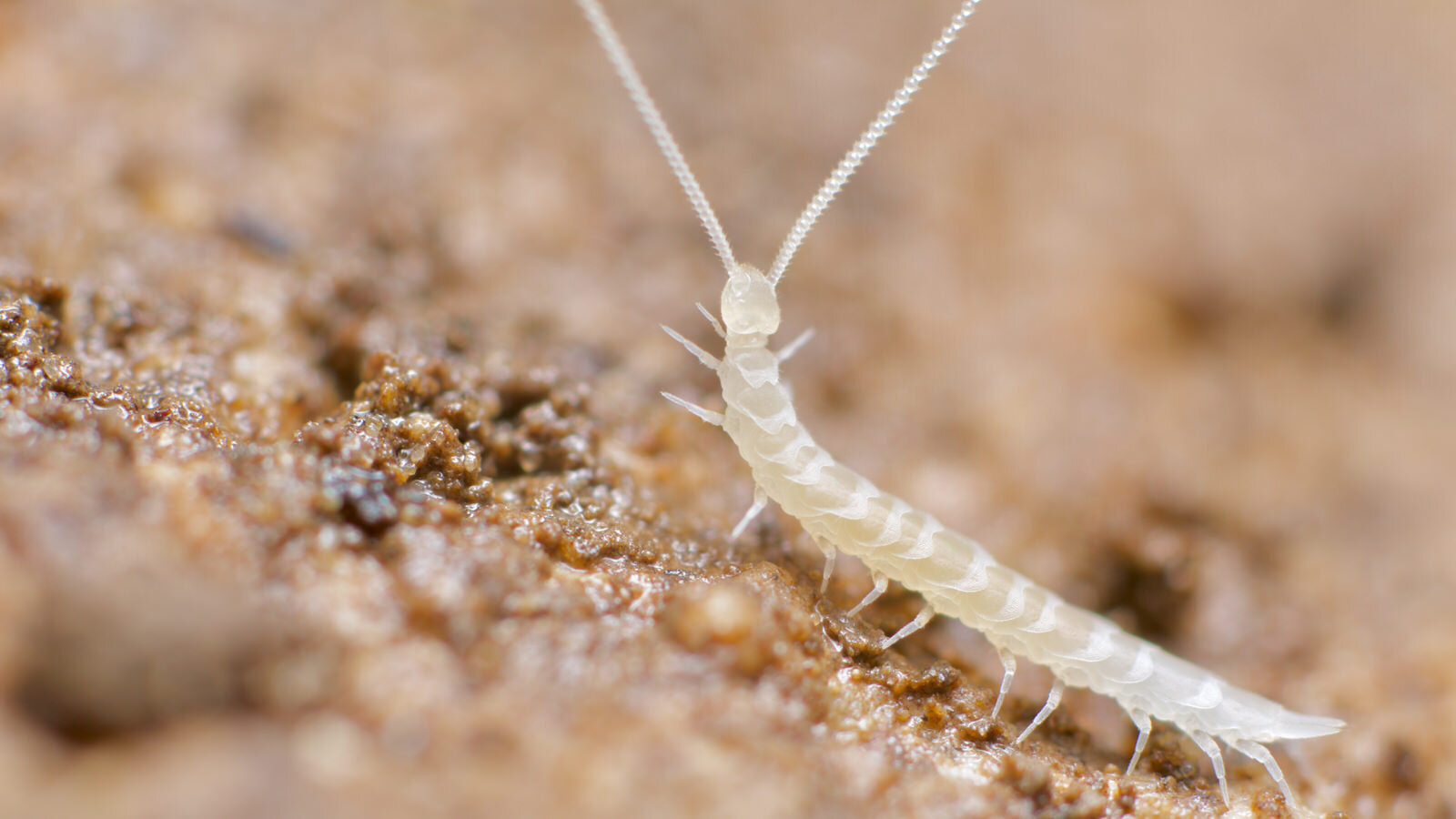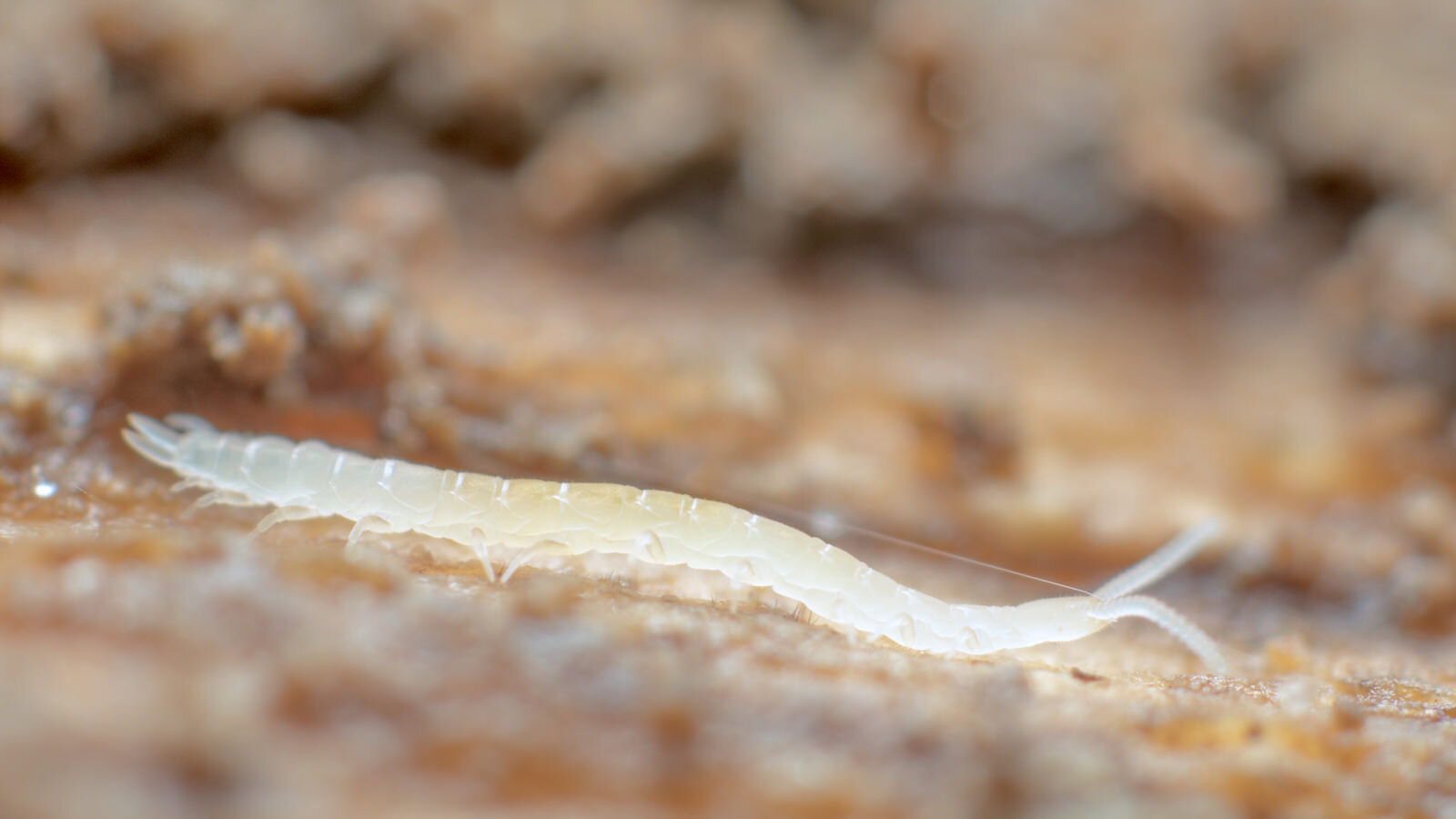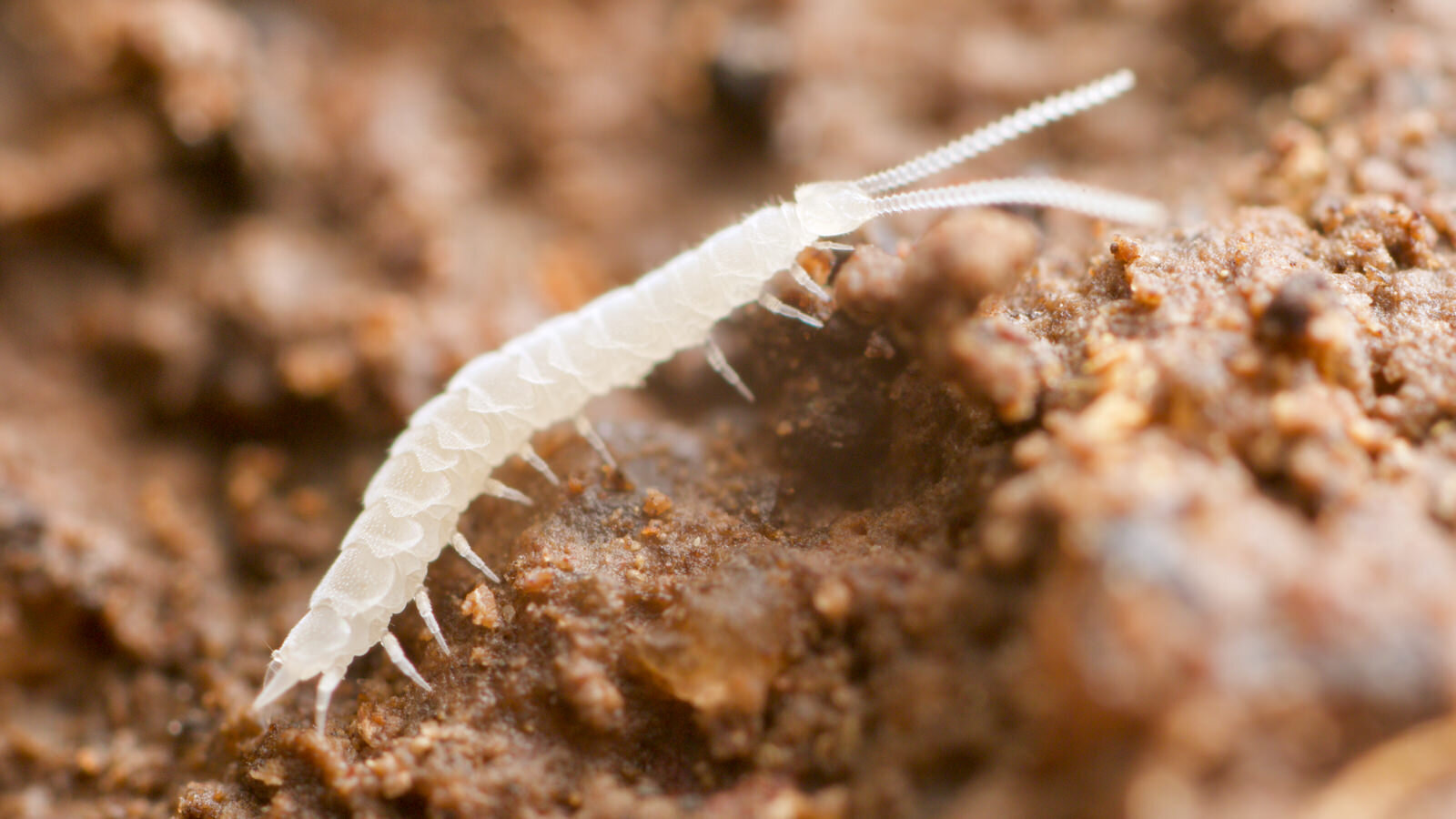
Symphyla, the garden centipede
Symphylans (Symphyla) (including the infamous garden symphylan or garden centipede, Scutigerella immaculata), are a class of tiny, many-legged, whitish soil-dwelling arthropods in the subphylum Myriapoda (meaning many-legged), together with centipedes (Chilopoda), millipedes (Diplopoda) and pauropods (Pauropoda).
However, all four members of the Myriapoda are differently related to each other. Taxonomists and cladisticians working out the complex relationships of the Entognatha have a hard enough time, but in Myriapoda, there are, at the moment, four differing ways to classify their relationships, all with good reasons why someone else's view might be more correct in the end. Morphology had placed Symphyla in a group closer to pauropods and Diplopoda, the millipedes. However, in a rash act of flip-flopping, recent DNA studies mean that once again, maybe Symphyla might be happier linked more closely with Chilipoda, the centipedes. Which party to go to? Do the meat platters of the centipedes trump the hummus dips and carrot sticks of the millipedes? We just don't know.
Most symphylan species are gentle detritivores, eating decaying leaf matter, with some species capable of being omnivorous. One species at least is predatory. And they do look a little like centipedes, if you don't look too closely.
However, some symphylans, such as the previously mentioned S. immaculata have a real pest status, and reviled by farmers and gardeners across the world for eating the roots of our crops, as well as causing specific and unforgiven damage to Mrs Gertrude Popplewell's lettuce seedlings last year. Though she could certainly find comfort in the fact that all symphylans prefer rich, fertile soils, with a decent soil structure. Well done Mrs Popplewell.
Being too small to force their own routes through the soil, symphylans, like most of the other soil mesofauna, make use of gaps, root holes and worm burrows to move around and feed.
Undoubtedly, they can cause some plant damage in the artificial systems we have created to feed ourselves and it’s not therefore surprising that some gardeners might feel that they need to get rid of symphylans entirely. However, when gardening and farming are not issues, they are an important soil detritivore in forests, breaking down organic matter and freeing up nutrients into the soil.
Under rock, Kuranda, Queensland, Australia, April 2016
Being sightless, as are most of the other soil animals, they rely on their antennae to work out their world. Luckily, as with many of the other soil animals, they are able to regenerate their antennae and limbs, through moulting, which occurs throughout their one year of life.
Interestingly, as mentioned by Hopkin and Roberts in their 1988 article Symphyla – the least studied of the most interesting soil animals, female symphylans store sperm in their cheek pouches, collected from the males’ spermataphores. When she has laid her eggs, she anoints the eggs with the sperm, licking the sperm onto the eggs’ outer surface, fertilising them.
A Scutigerellid symphylan

A Scolopendrellid symphylan

THE SCUTIGERELLIDAE AND SCOLOPENDRELLIDAE
There are only two families of symphylans- the Scutigerellidae and Scolopendrellidae. Beautiful names, but sounding more like two warring alien nations than soil animals. They can be told apart by the more snake headed shape of the Scolopendrellidae compared to the rounded head of the other. Scolopendrellidae also have twin lines of upturned spikes called paradonta running dorsally backwards from the head along each tergite.
A juvenile symphylan, Butleigh woods, March 2020
Juveniles start with six pairs of legs, and finish after six moults as an adult with twelve pairs.
Symphylan with reddish dietary pigment, Tasmania, Australia
Symphylans have been found 1 metre down some soils. Although they can't generally create their own holes through the soil, they can push between soil particles as well as down holes left by larger invertebrates and rotted roots. To gain better purchase in the soil, at the base of each leg is a stiff spine, as well as a small sac, used in osmotic pressure regulation and fluid exchange.
Symphylan- close up of the paradonta
The largest symphylan in the world is Hanseniella magna, an endemic Tasmanian cave dweller. It is one of only a few true symphylan troglodytes. It measures around 30mm.


Seen from above. Tairua, NZ, April 2014
All symphylans lack pigment and have a slightly translucent quality, making them stand out from the adults of Diplopoda and Chilipoda. But as is noticable in the photos below, they can absorb a certain amount of pigment from their diet, sometimes giving them a reddened or yellowed appearance.
Tarkine lodge, Tasmania, April 2014
St Columba Falls, Tasmania March 2014

